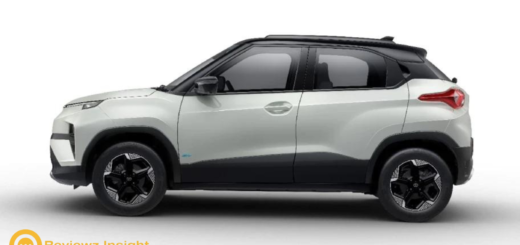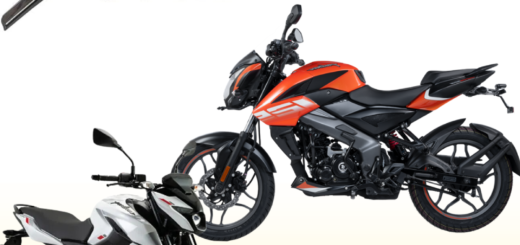Is the Honda QC1 Worth It? Full Ride Review Inside

Honda entered the electric scooter market with the QC1, aiming to offer an affordable and environmentally friendly commuting solution. At a price point of ₹90,000 (ex-showroom Delhi), Honda targets budget-conscious urban riders. The QC1 caters to everyday commuters seeking reliability, efficiency, and simplicity without unnecessary frills.
Design and Build
Honda designed the QC1 with a minimalist aesthetic, drawing inspiration from its Activa e: model. The scooter features a compact, sleek frame with a futuristic front apron and LED headlight. The handlebar cowl aligns with modern design trends, though the tail light lacks cohesion and feels like an afterthought. Overall, the QC1 offers a familiar look that eases the transition for riders shifting from traditional ICE scooters to electric models.
In terms of build quality, the QC1 delivers decent fit and finish. Honda chose good-quality plastics for the switchgear and ensured a solid feel throughout the body panels. At just 89.5 kg, the scooter feels exceptionally nimble. Riders can easily maneuver through congested city traffic, making it an ideal choice for daily commuting.
Performance and Range
Honda equipped the QC1 with a 1.8 kW BLDC hub motor that produces 77 Nm of torque. Riders can switch between two modes: Econ and Standard. In Econ mode, the top speed reaches 30 km/h, while Standard mode increases that to 50 km/h. The acceleration feels modest, especially in Econ mode, where the scooter struggles to keep pace with city traffic. Standard mode performs better and allows riders to stay in sync with the urban flow.
The QC1 comes with a fixed 1.5 kWh lithium-ion battery using BP cell chemistry. Honda claims an Indian Driving Cycle (IDC) range of 80 km. However, real-world usage delivers around 55 to 60 km in Standard mode and 65 km in Econ mode. Charging the battery from zero to 80% takes 4 hours and 30 minutes, and a full charge completes in 6 hours and 50 minutes. The standard 330W off-board charger handles charging duties. Unfortunately, the QC1 lacks fast-charging support, requiring riders to plan overnight charging for daily use.
Features and Technology
Honda added a 5-inch LCD instrument cluster that displays essential information, including speed, battery state of charge (SOC), and current riding mode. The display feels clear and easy to read, even under sunlight. However, the QC1 does not include advanced features like smartphone connectivity or a distance-to-empty (DTE) indicator. Riders must estimate the remaining range based on battery percentage.
Additional features include all-LED lighting, a generous 26-liter under-seat storage compartment, and a 40W USB-C charging port on the front apron. Honda designed the seat to offer excellent support, with a broad seating area and ample floorboard space. Riders of different heights can find a comfortable riding posture, even on longer urban trips.
Ride and Handling
Honda focused on urban practicality with the QC1’s suspension setup. The scooter uses a telescopic front fork and twin preload-adjustable rear shock absorbers. This configuration offers a comfortable ride across potholes and uneven surfaces common in Indian cities. The scooter glides smoothly over bumps, maintaining rider stability.
Honda paired a 12-inch front wheel with a 10-inch rear wheel. Drum brakes handle stopping duties, with a 130 mm drum at the front and a 110 mm drum at the rear. While the brakes offer satisfactory stopping power, some riders may miss the confidence of disc brakes. However, for an entry-level scooter, the braking setup meets expectations.
The QC1’s lightweight frame and compact proportions allow easy handling. Riders can weave through traffic with minimal effort. The scooter excels in tight spaces, narrow lanes, and crowded parking areas. Despite its strong urban performance, the limited top speed of 50 km/h restricts its ability to venture onto faster roads or highways.
Market Position and Competitors
Honda strategically priced the QC1 to compete with entry-level electric scooters like the TVS iQube and Bajaj Chetak. These rivals offer better top speeds and more extensive feature sets. However, the QC1 undercuts them on price. Honda banks on its strong brand presence, reliability, and affordability to attract first-time EV buyers. The QC1 works best for short-distance commuting rather than long rides or performance-oriented tasks.
Final Verdict
The Honda QC1 fulfills its purpose as a basic, affordable electric scooter for everyday urban use. Honda focused on practicality, ease of use, and brand trust. The scooter delivers a comfortable ride, a decent range for city commuting, and user-friendly ergonomics. However, riders seeking higher speeds, extended range, or tech-loaded scooters may find better options elsewhere.
Honda built the QC1 for riders who prioritize cost-efficiency and simplicity. It does not try to impress with high-end performance or flashy tech. Instead, it stays true to its roots—reliable commuting with a trusted badge. For daily riders and first-time EV users, the QC1 offers a reasonable entry point into the electric two-wheeler segment.













